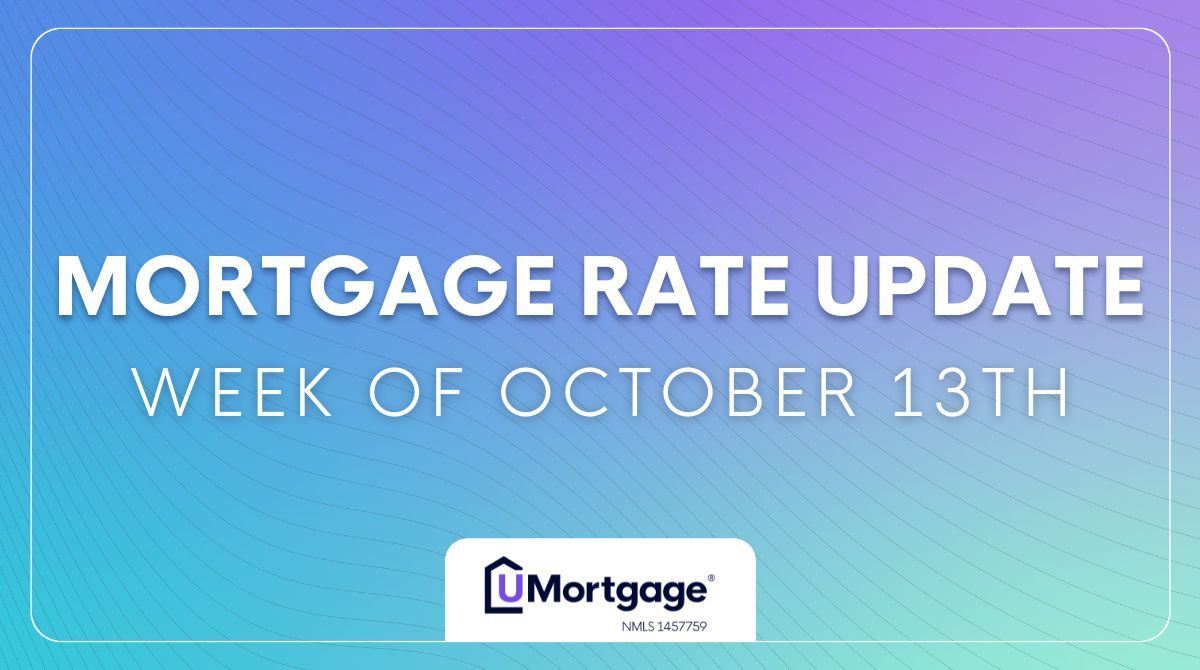

Gregory Fearnley
Meet Gregory!
As your trusted UMortgage Loan Originator, my goal is to simplify the mortgage process to make your home loan experience easy to navigate! Please reach out so I can help start your home financing journey.
Serving Homebuyers In:
- Alabama
- Arkansas
- California
- District of Columbia
- Florida
- Georgia
Mortgage Calculators
Monthly Payment
Find your monthly payment
What does a monthly mortgage payment look like for you? Get an estimate with some basic information.
Estimated Monthly Payment
The UMortgage mortgage calculators are for estimation purposes only. This is not a commitment to lend. For an exact quote based on your individual financial circumstances, please contact me.
Affordability
What is your budget?
Curious about how much you can afford to spend on a home? Use our calculator to get an estimate on your maximum budget.
Maximum Home Price
Maximum Monthly Payment
The UMortgage mortgage calculators are for estimation purposes only. This is not a commitment to lend. For an exact quote based on your individual financial circumstances, please contact me.
Refinance
Should you Refinance?
Refinancing might save money on your monthly mortgage payments, putting cash in your pocket. With some basic information from you, we can help decide if this is a good path for you.
Monthly Savings
Total Savings
The UMortgage mortgage calculators are for estimation purposes only. This is not a commitment to lend. For an exact quote based on your individual financial circumstances, please contact me.
VA Entitlement & Payments
Discover Your Buying Power With Our VA Home Loan Calculator!
If you are a veteran, an active-duty member of the military, or the spouse of a current or former military member, you are eligible to purchase a home with your VA home loan benefit! By using the calculator below, you can get a glimpse into your buying power and the estimated monthly payment of your VA loan as you start planning your homebuying journey.
Estimated Monthly Payment
Required Down Payment
Limit
$0
Entitlement Used
$0
Available Entitlement
$0
No Limit
How is my monthly payment calculated?
The UMortgage mortgage calculators are for estimation purposes only. This is not a commitment to lend. For an exact quote based on your individual financial circumstances, please contact me.
Your Mortgage Questions, Answered!

Housing Market Update | Week of October 13th
Mortgage rates were flat last week as the ongoing government shutdown continued to prevent the release of market-moving economic data. We saw a slight dip heading into a 3-day weekend on Friday when President Trump announced plans to impose an additional 100% tariff on imports from China, but it’s difficult for rates to go lower without those reports. What could help them go lower, though, is insight from voting members of the Federal Reserve, especially Fed Chairman Jerome Powell. And we’ll get exactly that tomorrow at noon when he speaks at a conference in Philadelphia. Markets currently expect a 0.25% cut to the fed funds rate during the October Fed Meeting, and if Powell more or less confirms that cut (just like he did in late August before the September Fed Meeting), we could see mortgage rates start to drop as we inch closer to that meeting on October 29. Last Week's Mortgage Rate Recap Rates Were Steady Due to the ongoing government shutdown, we didn’t get any of our market-moving economic data last week. However, on Friday, President Trump announced plans to impose an additional 100% tariff on imports from China. This sent the 10-year much lower heading into the 3-day weekend and should continue to impact markets when they reopen tomorrow. Mortgage rates dropped incrementally, but there isn’t much room for further decrease without our essential jobs and inflation reports. This Week's Mortgage Rate Forecast Rates Could Be Volatile As the government shutdown continues, so too does the delay of pivotal economic reports. However, unlike last week, there are a few things that could shift the market in the week ahead. Our usual monthly economic data has been postponed due to the government shutdown, but the White House ordered BLS workers to return so the CPI inflation report can be released this month. It’s currently set to be released next Friday, October 24th. The biggest market mover this week could come tomorrow when Fed Chair Jerome Powell speaks at a conference in Philadelphia. It was his speech at Jackson Hole in late August that signaled an upcoming Fed rate cut in September and sent mortgage rates lower. Markets currently expect another 0.25% rate cut in the October Fed Meeting. If Powell confirms these expectations, we could see similar mortgage rate activity to what we saw in late August and early September, with rates dropping heading into the meeting and bouncing slightly higher the week after. Of course, Fed policy is data dependent, and without our usual labor and inflation data, the Fed could always revert to “wait and see” mode. So, if any of our buyers see a rate that they like, it’d be best to lock it to help them avoid any potential volatility. If you have any questions or would like updates as we receive new developments on the government shutdown, follow this link to connect with a mortgage expert near you!

UMortgage Q3 Snapshot: Families Served, Industry Awards, & New Tech
The third quarter of 2025 was a big one for UMortgage as it continued to create life-changing opportunities through homeownership. Between new industry accolades, first-of-its-kind technology, and thousands of families served, Q3 gave UMortgage plenty of momentum to close out the year strong as mortgage rates continue to drop. UMortgage started the quarter with a reminder of the company’s continued growth when it was named to the Inc. 5000 list of America’s fastest-growing private companies for the second year in a row. This prestigious award was earned after UMortgage grew its revenue by 716% from 2021 to 2024, helping 21,639 families build generational wealth through homeownership along the way. When mortgage rates dropped in Q3, UMortgage Loan Originators were quick to help homebuyers and homeowners take advantage of newfound affordability and savings. They originated a combined 1,729 mortgages, including 508 VA loans and 410 refinances, in 41 different states across the country. Each of these families received industry-best service throughout their mortgage process as well. UMortgage’s Net Promoter Score (NPS) was 98 out of 100 in Q3. A company’s NPS is earned through single-question surveys sent to clients immediately after closing to gauge their experience when it’s freshest. Positive relationships with borrowers and real estate agents are at the center of UMortgage’s ethos. To help UMortgage Loan Originators track and improve their relationships, UMortgage launched the Referral Partner Relationship Tracker in Q3 on Tempo, its proprietary sales performance tracking app. The Relationship Tracker, launched on August 15, 2025, provides every LO with a simple way to log touchpoints (calls, meetings, texts, and emails), view relationship health at a glance, and receive alerts when they need to reach out, all within Tempo. It’s integrated with ARIVE and Salesforce, so activity is captured automatically, and follow-up never falls through the cracks. The Tempo team is actively working on the Lead Tracker, which provides similar resources to deliver a consistent and excellent experience for individuals seeking a mortgage. The results of these tools within Tempo are more proactive communication with borrowers and agents, stronger referral pipelines, and a better post-closing experience. UMortgage and its Loan Originators are committed to providing prospective homebuyers, homeowners, and real estate with a best-in-class mortgage experience. Ready to learn more? Click here to see the products and services UMortgage offers. If you’re a Loan Originator interested in unlocking the tools available on the UMortgage platform, like Tempo, watch our Loan Originators Powered by UMortgage presentation, and a member of my team will be in touch.

Red Flags in Lending: Mortgage Points
Imagine this: you’re shopping for a mortgage and see one lender advertising a rate that looks way better than the others. You’re excited, until you find out the fine print. That “too good to be true” rate often comes with thousands of dollars in extra fees to secure that rate, known as mortgage points, added to your closing costs. Unless you know how to spot them, you might be walking into a loan that costs you far more than you planned. The truth is that mortgage points aren’t always a bad thing; they can be a smart financial tool in the right situation. But when lenders advertise them without explaining the cost, it’s a red flag that can leave buyers with sticker shock at the closing table. So, in this blog, we’ll explain what it means to buy down your rate, how to spot whether you’re being charged points before you commit to your mortgage, and some situations where you might want to buy down your rate. What Does It Mean to Buy Down Your Mortgage Rate? Buy down points, also known as mortgage points or discount points, are prepaid interest fees that allow you to lower your interest rate. Typically: 1 point = 1% of the loan amount Each point lowers your rate by about 0.25% For example, on a $400,000 loan, one point would cost you $4,000 and reduce your rate by about 0.25%. To lower your rate by a full percentage point, you may be looking at an upfront cost of $16,000. This is precisely why it can be dangerous to take the flashy interest rate you were offered without reading the fine print. Check out our guide covering the Basics of Rate Buydowns for a deeper dive. How to Spot Buy Down Points on Your Mortgage’s Loan Estimate If you want to know whether the “advertised rate” includes points, look closely at Page 2 of your Loan Estimate. Under Section A: Origination Charges, look for a line that says “___% of Loan Amount (Points).” The dollar amount listed there tells you exactly how much you’re paying for points. This quick check helps you see through the marketing and compare offers on an apples-to-apples basis. Read this blog for more tips to understand the fine print of your loan estimate. When You Might Want to Buy Down Your Mortgage Rate While mortgage points might seem deceiving at times, they aren’t always a trap. In the right situations, they can actually help you save money over time. Here are a few cases where it might make sense: Permanent buydown (long-term homeowners): If you plan to stay in your home for many years, paying up front to reduce your rate could save you more in the long run. Temporary buydown (short-term relief): A 2-1 or 3-2-1 buydown lowers your payments for the first couple of years. This is helpful if you expect your income to grow or plan to refinance soon. When someone else is paying: If a seller, builder, or even your lender offers concessions or credits, using them for a rate buydown can be a great deal. “Buydowns are not a one-size-fits-all solution, but they can be a great option for several reasons,” says Matt Gouge, a UMortgage Loan Originator. “Especially now, a high-interest-rate environment favors a buy-down. Affordability is an issue in a lot of markets, so buy-downs are a great transition from somebody who’s renting for $2,500 to swallowing the pill of a $3,800 mortgage.” Why You Might Not Want to Buy Down Your Mortgage Rate On the other hand, points aren’t always worth it. Here’s why: High upfront costs: Especially on larger loans, points can add tens of thousands to your closing costs. Short-term homeowners: If you plan to move in a few years, you may not save enough each month to recoup the upfront costs. False advertising: Some lenders use low advertised rates that only exist because of costly points. When you finally see your Loan Estimate, you realize your cash due at closing is way higher than expected. That’s why it’s so important to review your Loan Estimate carefully and work with a lender who explains the whole picture. Advice for Homebuyers: Focus on the Numbers That Matter Mortgage points aren’t inherently good or bad. It’s about whether they make sense for your situation. The key is transparency. A trustworthy Loan Originator will show you not just the rate, but also the cash due at closing and your monthly payment. Those are the two numbers that matter most when deciding on a mortgage. “Not everyone who buys a home is a financial expert,” continued Gougé. “When you look through your loan estimate, I always show my buyers the numbers that affect them the most: the purchase price, the monthly payment, and the cash to close. That’s what matters.” At UMortgage, our Loan Originators guide you through every option so you can decide whether points are worth it, without surprises. Fill out this form to get connected with a Loan Originator near you who will help you achieve your homeownership dreams without burning a hole in your pocket.
Serving Homebuyers In:
- Alabama
- Arkansas
- California
- District of Columbia
- Florida
- Georgia
